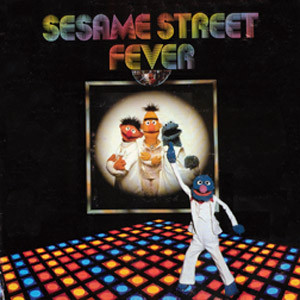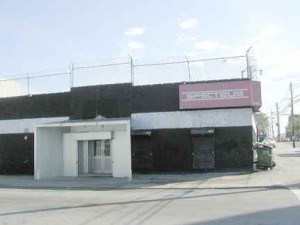To get you in the mood for the weekend, every Friday we’ll be celebrating ‘FRIDAY NIGHT FEVER’, featuring an old New York nightlife haunt, from the dance halls of 19th Century Bowery to the massive warehouse spaces of the mid-90s. Past entries can be found here
How can I continue to do this series without featuring the most iconic dance floor of all-time, the primary-colored, flashing plastic spectacle from 2001 Odyssey, best known as the dance club from “Saturday Night Fever”?
Recently minted drag queen John Travolta once took his iconic swagger to this club, formerly at 802 64th Street, Bay Ridge, Brooklyn.
That sparkly floor was actually built for the movie. Director John Badham was inspired by a similar floor at a private supper club in Birmingham, Alabama, seen by some Southern residents as a landmark.
However, the club itself was a mainstay for disco dancers in the Brooklyn neighborhood, many of whom were brought on as extras in the film.
You can say disco literally saved this club. It was formerly the lounge act stage called the 802 Club that in its heyday spotlighted the likes of Jerry Vale and even Christine Jorgensen in her own cabaret act. Falling on hard times, the owner’s son took over the place, wrapped it in mylar and hung up a disco ball. 2001 Odyssey was ready to disco.

And in the process, the club changed disco. On top of starring in the Citizen Kane of dance music films, 2001 Odyssey brought in all sorts of up-and-coming talents to perform, like Gloria Gaynor and the Trammps. The clientele itself defined what we might call one of the ‘disco archetypes’. Or as defined by the owner Chuck Rusinak:
“[We used to call them cuigines.] A cuigine is somebody that would wear a huckapoo shirt, a pair of dance shoes. Very secure of himself, a womanizer, a little bit of a tough guy too. “Don’t mess my hair up, otherwise you got a problem. I get a baseball bat.”
If Manhattan disco was drug-fueled, glitzy and celebrity-driven, the Brooklyn disco scene — led by 2001 Odyssey, L’Amour, and other clubs — was the world of the ‘regular joe’, with the focus more on sex and appearance and less on glamour and notoriety. Or, according to 2001 Odyssey bouncer Vito Bruno:
“The guys back in those days, even though they were broke, they were dripping with their gold chains. …. Back in those days, the girls got dressed up. They got decked. The girls liked the tough boys. The toughest, meanest guy always got the girl. It’s kind of like the animal kingdom.”

2001 Odyssey wained in the wake of the death of disco, and in the late 80s, it became a gay club called Spectrum, which still kept the disco floor but catered to an entirely different audience. It eventually closed in 1995.
And the famous disco floor? The Spectrum tried to auction it off in 2005. (Could you just imagine trying to install it in your living room?) However, the aforementioned bouncer Vito Bruno claims that he won rights to the floor a few months previous for the whopping sum of $6,000. A judge promptly stopped the auction, and as far as I can tell, Bruno is now the proud owner of a piece of cinema history.
But don’t frown; you can do your own moves on a very similar floor at the Guggenheim Museum! Their present exhibit The Shape of Space (through Sept 5) features an installation by Piotr Uklański — Untitled (Dance Floor)– which emulates, in a far greater color palette, the legendary dance floor. Needless to say, this is one of the museum’s most popular pieces. (See picture below.)
Nerve does an excellent job in digging up some of the old 2001 Odyssey crew for their recollections of the place. And if you’re interested in checking out some other Brooklyn ‘Saturday Night Fever’ locations, check this out.
